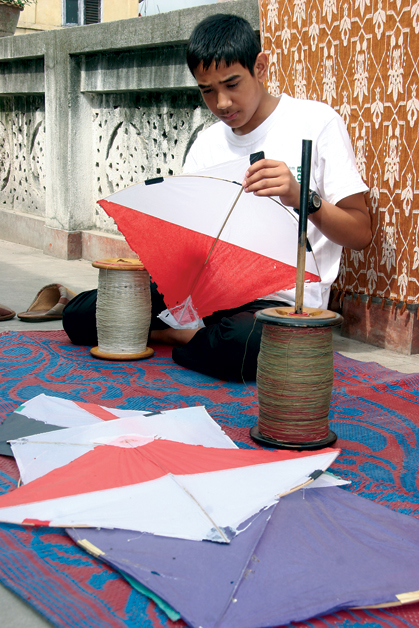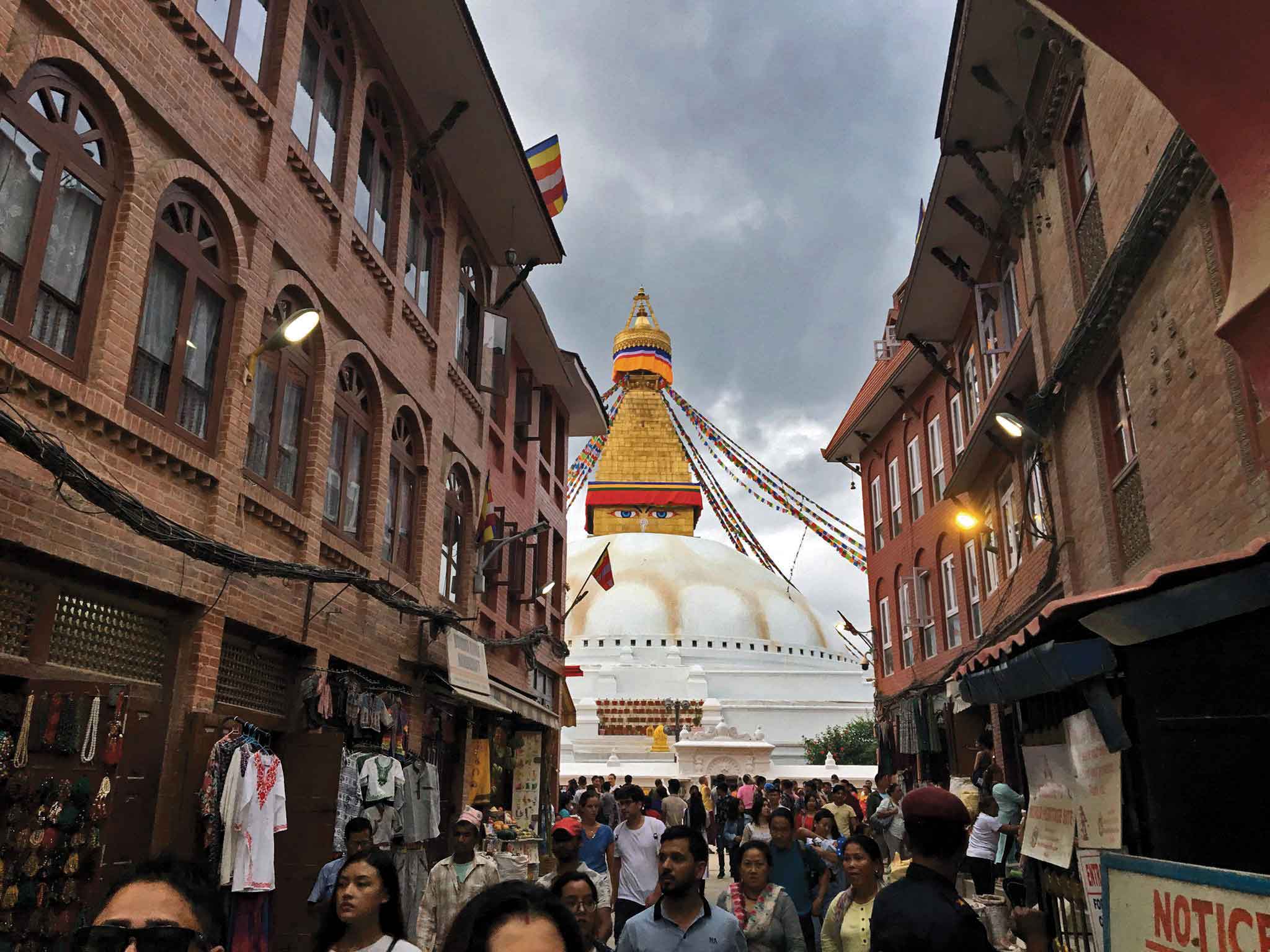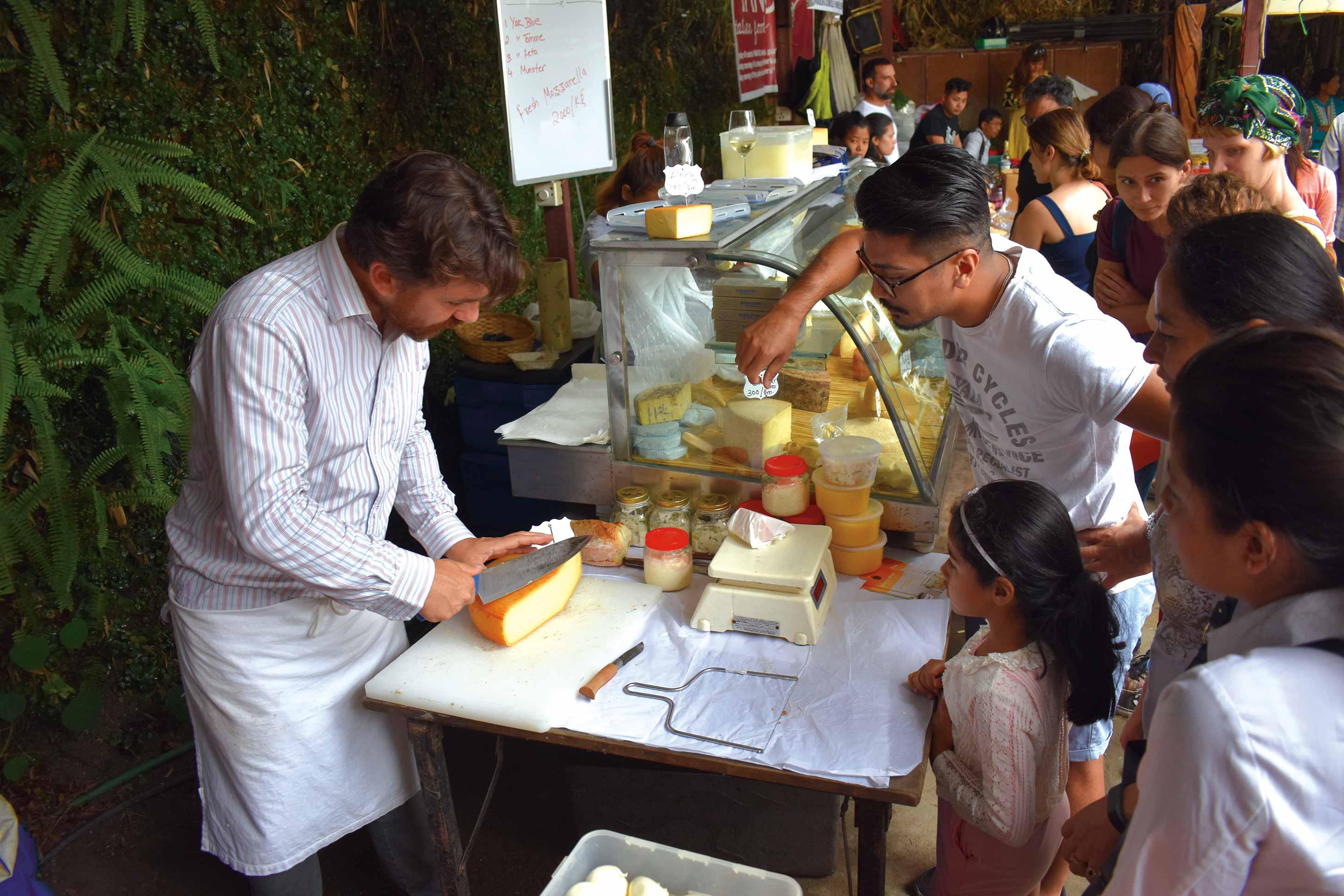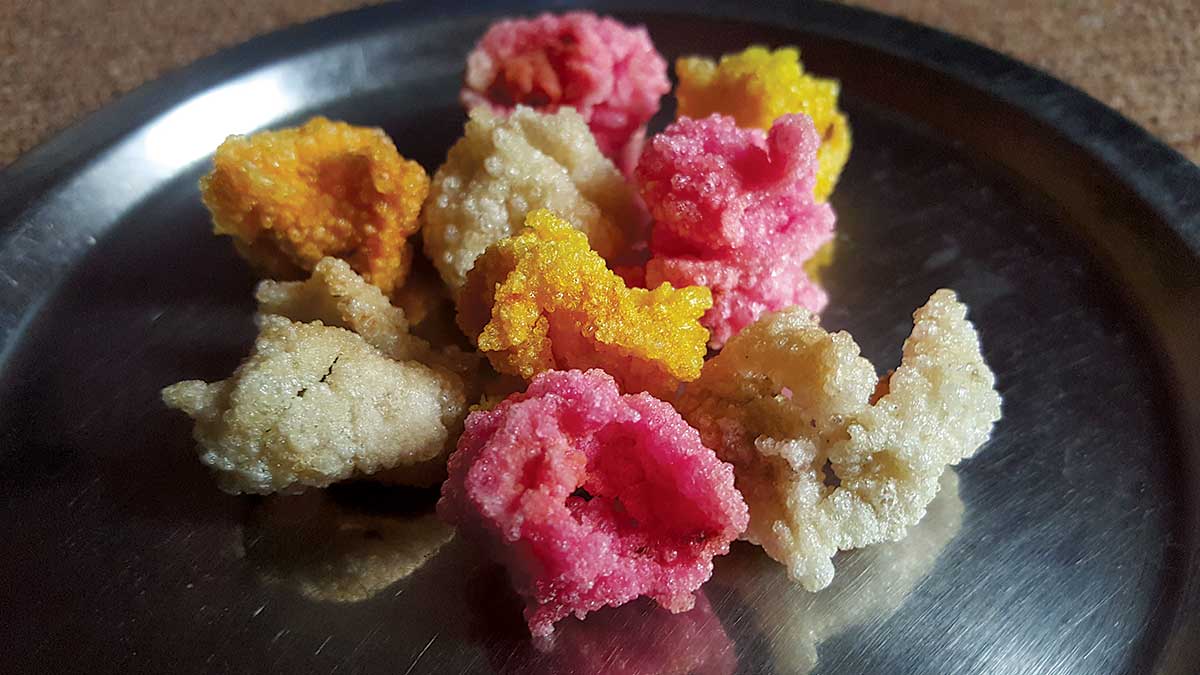It's a couple of hours past noon and the rays of the sun are quite supple. Anup Mani Dhamala stands atop his rooftop, licks his thumb and points it towards the sky. An atypical gesture, but to my questioning eyes, he promptly answers, "To test the direction of the wind." Done with his explanation, he proceeds, shoving the little diamond shaped kite in the direction of the fickle, almost-motionless breeze. In no time his Kite catches the wind and frolics across the blameless blue sky, while Anup steers it in the direction he wishes, spiraling it around the great open spaces.
 Towards the end of September and the beginning of October, the westerly winds from the Bay of Bengal gradually clear off the last of the gloomy monsoon clouds. Then begins the dry windy days of autumn. The autumnal winds signify the approach of harvest season, a time when farmers rush to crop-off the rich ripe grains whistling along with the wind, in their fields. But for the young and the youthful, the smooth clime, the subtle rays of the sun and the swift yet steady autumnal winds sing a different tune. For them it marks the beginning of the kite-flying season.
Towards the end of September and the beginning of October, the westerly winds from the Bay of Bengal gradually clear off the last of the gloomy monsoon clouds. Then begins the dry windy days of autumn. The autumnal winds signify the approach of harvest season, a time when farmers rush to crop-off the rich ripe grains whistling along with the wind, in their fields. But for the young and the youthful, the smooth clime, the subtle rays of the sun and the swift yet steady autumnal winds sing a different tune. For them it marks the beginning of the kite-flying season.
Messages to the Gods
The specific time when kite-flying began as a festive pastime in Nepal is not known. But it seems that since time immemorial the Nepalese have been enjoying this celebration in the sky. Myths claim that flying kites notify the gods, to stop the last of the monsoon rain, so that farmers can harvest their crops. Some people also believe that kites guide the souls of the deceased to heaven. Thus, with tradition as well as the season backing up the activity, families and friends gather together on rooftops and in open fields with their colorful supply of kites, spools and majha, the shard-glistened thread, waiting for the perfect wind to take their kites off. Novices and professionals with decades of experience join in the serious but amusing battles in the sky. Kite-flying complements the merry spirit of Dasain, a festival that celebrates the end of the harvest season.
The Kite-flying tournaments, although just small idyllic indulgences, start as soon as the post-monsoon winds arrive. On the typical day dozens, maybe hundreds of kites swarm the Kathmandu sky. Rajesh Shrestha, a kiting aficionado, reveals that the first few days are simply warm up sessions. During this period, flyers sharpen their techniques and test their equipment, examine the serration of majha, its ability to cut-off others' kites and the strength of lattai, the bamboo spool on which the majha string is wound. These are the typical preparations for the battles in the sky that are usually reserved for the last ten days of Dasain. Rajesh continues: "The process is often both toiling and exhilarating, starting with buying high quality thread and glistening it with glue and shards of glass, to getting a light bamboo lattai." He says that preparing the majha itself takes nearly a week and involves grinding glass to a fine powder. Expert kite-fighters prefer using the glass from tube lights, which can be grounded into a fine dust. They mix the glass with glue and starch and then apply it to the thread. Nowadays such thread can easily be bought in the market, but many experts still prefer preparing it themselves. Above all, the most important selection an expert flyer has to make is the kite itself.
The types of kites
Dayaram Joshi, a shopkeeper in Ason, sitting serenely amongst his colorful display of kites, says that selecting a kite is an art in itself. He says that a keen, incisive flyer can just feel the kite that will obey him in the sky. Though the square shaped Malay kite with an indistinct tail (a short snout triangle) is the only kind available here in Nepal, it still can be categorized into different types on the basis of the materials it is made of, starting from those made out of recycled paper to the ones made of plastic. The simplicity of the Malay kite adds up to its swiftness, which makes flying it more enjoyable. Most of the kites and spools come from India, but the best kites are those made out of lokta, the traditional Nepali handmade paper. The lightness of lokta makes it a preferable material for flyers, but they are quite flimsy and easily torn. Hence, children and novices not acquainted with the art of kite-flying are recommended to first learn with kites made of plastics, as they are much stronger and are equipped with a long tail which tames the kite down to some extent.
With the approach of Dasain, considering that children are let-off from school and adults are free from their work, the number of kites flying in the great expanse of white and blue increases. There are kites being flown from each adjacent street. As the numbers increase, so does competitiveness. Friends compete against friends and neighbors against neighbors. Each flyer's goal is to try to gain victory by cutting off the other flyers' string. The lattai (bamboo spool), a cylindrical reel with smooth wooden handles on both sides, acts as a kind of steering wheel. The flyer snuggles it between the index finger and the thumb; hence, the majha automatically rolls out when the kite catches the wind and goes until the flyer stops the outgoing thread. The kite can be stirred the way one wants by spontaneously reeling in and reeling out the spool.
It's al about strategy
Once the kite is launched, it frolics on the wind. Its spiraling trail is whimsical and unpredictable. This makes kite flying exhilarating, as the flyer does not know quite what to expect. The escalating trail can only be maneuvered by steering the spool. Then, as the kite steadies to some extent, the flyer motions his kite towards the opponent's. Thus begins the long-anticipated battle in the sky. As the distance between two kites is greatly diminished, the flyer lets off the majha, so that it spirals downwards. The spiraling majha also encircles the other kites string. Hence, when the flyer reels in his spool, the abrasive glass lined majha cuts the opponent's kite string. All this has to be strategically planned, however, since in some cases the action might result the other way round, and the attacker might end up getting his own kite cut down instead. Regardless, as the defeated kite stops dead in the sky and begins spiraling downward, the whole neighborhood echoes in a monosyllable screech of "Chait!" Then little kids run behind the fallen kites as if following a treasure trail, trying to earn a new kite for free.
Again, kite-flyers are not a bunch who easily gives in. Many a time when attacked by another kite, the majha does not cut-off the opponent's line. But the flyer who is being attacked simply lets down his majha, in order to fool the attacker. Seeing a steadily flying kite, gently wavering towards the ground like a feather, the attacker and the whole neighborhood, assume that the majha has been incised. But as the attacker jubilantly soars his kite into greater heights as a triumphant gesture, the defending flyer pull-in his majha and all of a sudden the dead kite, springs back to life, cutting short the echoes of "Chait".
Some things just remain the same.
The kiting mania increases with each passing day. The competitions toughen and so do the hoots and the cheers. The joyful screeching cries of "Chaanga chait!" echo, along with a few mournful groans from the losers. Although adults and old men usually busy themselves in playing cards during Dasain, their evenings are devoted to watching the kites fly. Elderly people watching the spirits of their times still alive, remark how some things never change despite of the changes in the lifestyle and customs of the people. This surely seems true, since nowadays the kite flying competitions are formally organized in various parts of Kathmandu, thus preserving our heritage and also providing pleasure.
As the Dasain festival season ends, so does kite-flying. The winds of mid-autumn are quite harsh, hence unfavorable for kite-flying. Then the only kites one sees are the skeletal remnants of the defeated ones fallen months ago, discolored and diminished by heat, hanging in the tree branches or stuck amongst the electrical cables alongside
the roads.
Some lesser-known vegetable dishes from the southern plains
I’m not a vegetarian but I love vegetables. And whenever I get to the southern plains of Nepal, I try...










